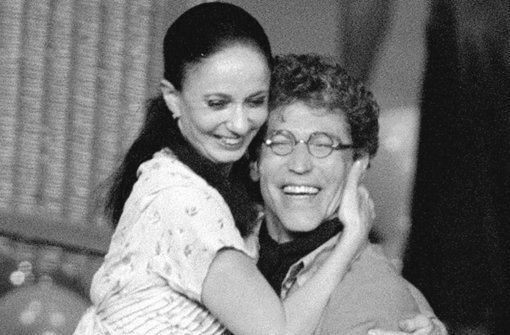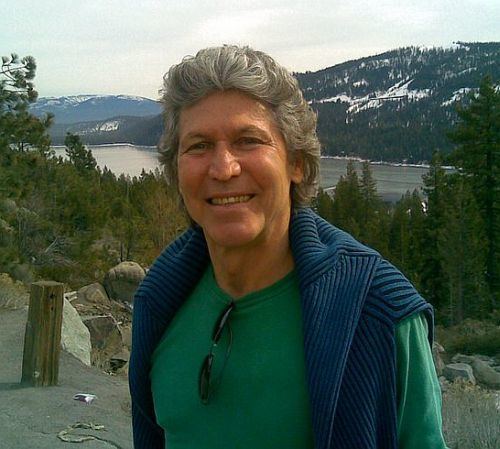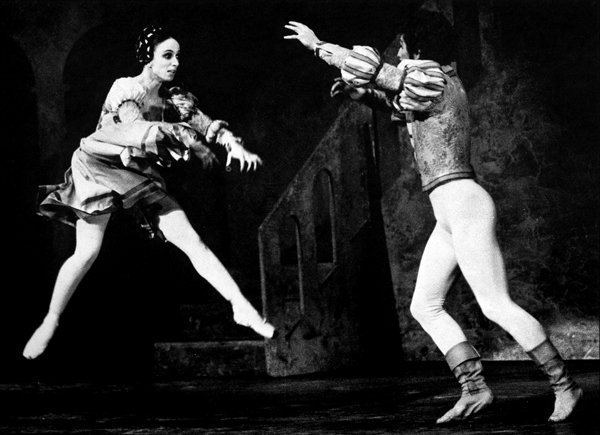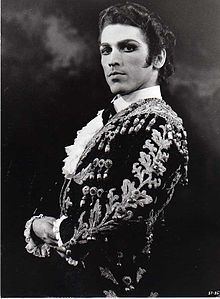Cause of death Seizure Name Richard Cragun | Years active 1962–2012 Occupation Dancer Ex-spouse Marcia Haydee | |
 | ||
Partner(s) Roberto de Oliveira (1998–2012 (Cragun's death)) Education Banff Centre, Royal Ballet School | ||
Richard cragun
Richard Cragun (5 October 1944 – 6 August 2012) was an American ballet dancer who rose to international fame with the Stuttgart Ballet in Germany. He has been called a "prince of the ballet world" and "one of the most important dancers of the twentieth century."
Contents
- Richard cragun
- En memoria de richard cragun 1944 2012
- Early life and training
- Performing career
- Roles created
- Ballets by Cranko
- Ballets by others
- Personal life
- Later life
- References

En memoria de richard cragun 1944 2012
Early life and training

Richard Alan Cragun was born in Sacramento, the state capital of California. One of three sons in a family where academic achievement was prized, he was obsessed with music and dance from his earliest years. As a boy of 5, he began taking tap dance lessons from Jean Lucille in his hometown. A few years later, he decided to make dancing his profession after his father, a college librarian, took him to see Singin' in the Rain (1952), a Hollywood film musical. Donald O'Connor, one of the stars of the film, became his "first, absolute idol." Inspired to emulate O'Connor's lyrical, balletic style of tap dancing, Cragun took up ballet classes with Barbara Briggs, soon showing talent for classical dance. As a teenager, having begun to realize the expressive possibilities of ballet, he persuaded his parents to let him accept a scholarship to the Banff School of Fine Arts in Alberta, Canada, an internationally recognized center of creativity in the visual and performing arts. After a period of study there with Betty Farraly and Gweneth Lloyd, he was seen by visiting Royal Ballet star Alexander Grant, who suggested that he apply to the Royal Ballet School in London. During the year that he spent there, his teachers were Errol Addison and Harold Turner. At age 17, Cragun went to Copenhagen, Denmark, to continue training in private classes with Vera Volkova, who was responsible for polishing his remarkable classical technique.
Performing career

In 1962, Volkova recommended Cragun to John Cranko, director of the Stuttgart Ballet in Germany, who engaged him, sight unseen, as a member of his corps de ballet. Barely 18 years old, Cragun took his first steps in a rapid rise toward stardom. In 1965, soon after his appointment as principal dancer, he began his legendary partnership with Marcia Haydée, a Brazilian dancer of marked dramatic ability. A big, handsome man, with a powerful physique, Cragun was a dancer of dazzling virtuosity and distinct virility, a perfect foil for the brilliant technique and delicate femininity of Haydée. The two of them had great success with German audiences in a wide range of works in the Stuttgart repertory, from the classical purity of Swan Lake to the passionate romanticism of Onegin to the rambunctious humor of The Taming of the Shrew. Their professional partnership endured for more than thirty years, from 1965 until Cragun's retirement in 1996, making it one of the longest lasting in ballet history.

Blessed with a perfect physique for dancing, Cragun was a virtuoso of the ballet stage, equaled by only a few male dancers of his generation. He embodied the explosive, colorful form of classical ballet that was sometimes called "the Stuttgart style." Flawless triple tours en l'air were his trademark, an athletic feat accomplished only by such bravura dancers as Edward Villella and Mikhail Baryshnikov on rare occasions. Clive Barnes, dance critic for the New York Times, wrote, "He possesses tremendous elevation. There is a cumulative pulse and rhythmic beat to his dancing that is enormously impressive." He won high praise for his performances in principal roles in Cranko's Romeo und Julia, Onegin, and, especially, The Taming of the Shrew. "Cragun was a strikingly handsome Petruchio, by turns self-mocking, overbearing, funny, and tender. The role suited his robustly masculine and charismatic stage personality and provided a first-class showcase for his virtuosity and partnering skills. No dancer has equaled him in the role.
Cragun remained with the Stuttgart Ballet throughout his performing career. Thanks to the company's tours abroad and to frequent guest appearances with other companies, he achieved a formidable reputation as an international star. Besides his appearances with leading companies in Germany, he danced on stages in Denmark, Belgium, the Netherlands, England, Sweden, Italy, Canada, the United States, and Japan. Late in his career, in 1990, he appeared in the Stuttgart revival of the Broadway musical On Your Toes, where, in the principal role of Junior, he finally had a chance to exhibit his tap dancing skills.
Roles created
In the course of his long career, Cragun created many roles in the ballets of John Cranko and other European choreographers. Among them are the following.
Ballets by Cranko
Ballets by others
Personal life
Off stage, Cragun and Haydée fell in love and became a couple not long after their meeting. They lived together for about ten years, until Cragun realized that he was essentially homosexual. After their romantic relationship ended in 1977, they remained fast friends and colleagues. Haydée bore him no resentment. "Richard was one of the best dancers in the world," she said. "Even after our separation, we were the best of friends." They continued to work together and dance together until he retired from the stage. In later years, Cragun formed a loving partnership with Brazilian choreographer Roberto de Oliveira, which endured for fourteen years, ending only at his death.
Later life
In his later years with the Stuttgart Ballet, Cragun became one of the company's ballet masters and was a vital force in rehearsing and coaching his successors in all his roles. Upon finishing his career as a dancer, he was appointed ballet director of the Deutsche Oper in Berlin, where he spent three not very happy years. Encouraged by Haydée, he left Germany in 1999 and moved with his partner, Roberto de Oliveira, to Brazil, where they launched DeAnima Ballet Contemporáneo for youngsters from the black slums of Rio de Janeiro. Cragun also became ballet director at the city's Teatro Municipal, where, despite a lack of financial support, he managed a company of some seventy dancers and staged works from the Stuttgart repertory. A talented cartoonist, Cragun also mounted several exhibitions of his work in art galleries and other venues in the city.
Cragun was in poor health in his last years, suffering from the effects of a stroke in 2005 and complications from living with AIDS. On 6 August 2012, he suffered a seizure triggered by a lung infection and died in Rio de Janeiro soon after being admitted to hospital. He was survived by de Oliveira and his younger brother, Lawrence. A friend gave this report of his funeral: "The most moving moment at yesterday's cremation ceremony in Rio came when the flower-covered coffin began to move away, and Richard's friends and admirers, led by Marcia Haydée, stood, applauded, and cried out 'Bravo,' as they had so many times at the end of his magnificent performances. It was a spontaneous and appropriate ovation and send-off. Richard deserved no less."
